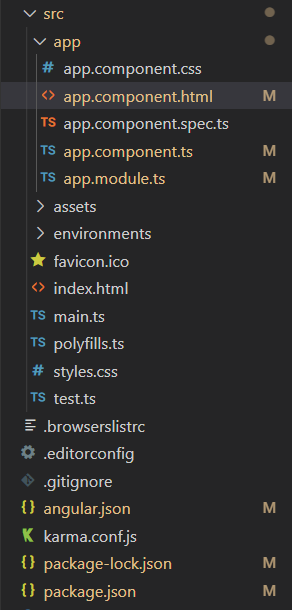Angular PrimeNG AvatarGroup
Last Updated :
29 Sep, 2022
Angular PrimeNG is a UI component library for Angular Applications. It offers many pre-built themes and UI components for a variety of tasks like inputs, menus, charts, Buttons, etc. In this article, we will be seeing Angular PrimeNG AvatarGroup.
The AvatarGroup Component is used to group avatars together. It creates a container for the avatars with the display property set to flex and items aligned to the center.
Syntax:
<p-avatarGroup>
<p-avatar icon="pi pi-search"></p-avatar>
<p-avatar icon="pi pi-hashtag"></p-avatar>
<p-avatar icon="pi pi-circle"></p-avatar>
...
</p-avatarGroup>
Creating Angular Application and Installing the Modules:
Step 1: Create an Angular application using the following command.
ng new appname
Step 2: After creating your project folder i.e. appname, move to it using the following command.
cd appname
Step 3: Finally, Install PrimeNG in your given directory.
npm install primeng --save
npm install primeicons --save
Project Structure: The project Structure will look like this after following the above steps:

Project Structure
Example 1: In this example, we used the avatar group component to group three icon avatars together.
app.component.html
<h1 style="color:green">GeeksforGeeks</h1>
<h3>Angular PrimeNG AvatarGroup</h3>
<p-avatarGroup>
<p-avatar
icon="pi pi-search"
shape="circle"
size="large">
</p-avatar>
<p-avatar
icon="pi pi-hashtag"
shape="circle"
size="large">
</p-avatar>
<p-avatar
icon="pi pi-circle"
shape="circle"
size="large">
</p-avatar>
</p-avatarGroup>
|
app.component.ts
import { Component } from '@angular/core';
@Component({
selector: 'app-root',
templateUrl: './app.component.html',
styles: []
})
export class AppComponent {
}
|
app.module.ts
import { NgModule } from '@angular/core';
import { BrowserModule } from '@angular/platform-browser';
import { AppComponent } from './app.component';
import { AvatarModule } from 'primeng/avatar';
import { AvatarGroupModule } from 'primeng/avatargroup';
@NgModule({
declarations: [
AppComponent,
],
imports: [
BrowserModule,
AvatarModule,
AvatarGroupModule
],
providers: [],
bootstrap: [AppComponent]
})
export class AppModule { }
|
Output:
Example 2: In this example, we used the avatar group to group two image avatars together.
app.component.html
<h1 style="color:green">GeeksforGeeks</h1>
<h3>Angular PrimeNG AvatarGroup</h3>
<p-avatarGroup>
<p-avatar
shape="circle"
size="large"
</p-avatar>
<p-avatar
shape="circle"
size="large"
</p-avatar>
</p-avatarGroup>
|
app.component.ts
import { Component } from '@angular/core';
@Component({
selector: 'app-root',
templateUrl: './app.component.html',
styles: []
})
export class AppComponent {
}
|
app.module.ts
import { NgModule } from '@angular/core';
import { BrowserModule } from '@angular/platform-browser';
import { AppComponent } from './app.component';
import { AvatarModule } from 'primeng/avatar';
import { AvatarGroupModule } from 'primeng/avatargroup';
@NgModule({
declarations: [
AppComponent,
],
imports: [
BrowserModule,
AvatarModule,
AvatarGroupModule
],
providers: [],
bootstrap: [AppComponent]
})
export class AppModule { }
|
Output:
Reference: http://primefaces.org/primeng/avatar
Share your thoughts in the comments
Please Login to comment...